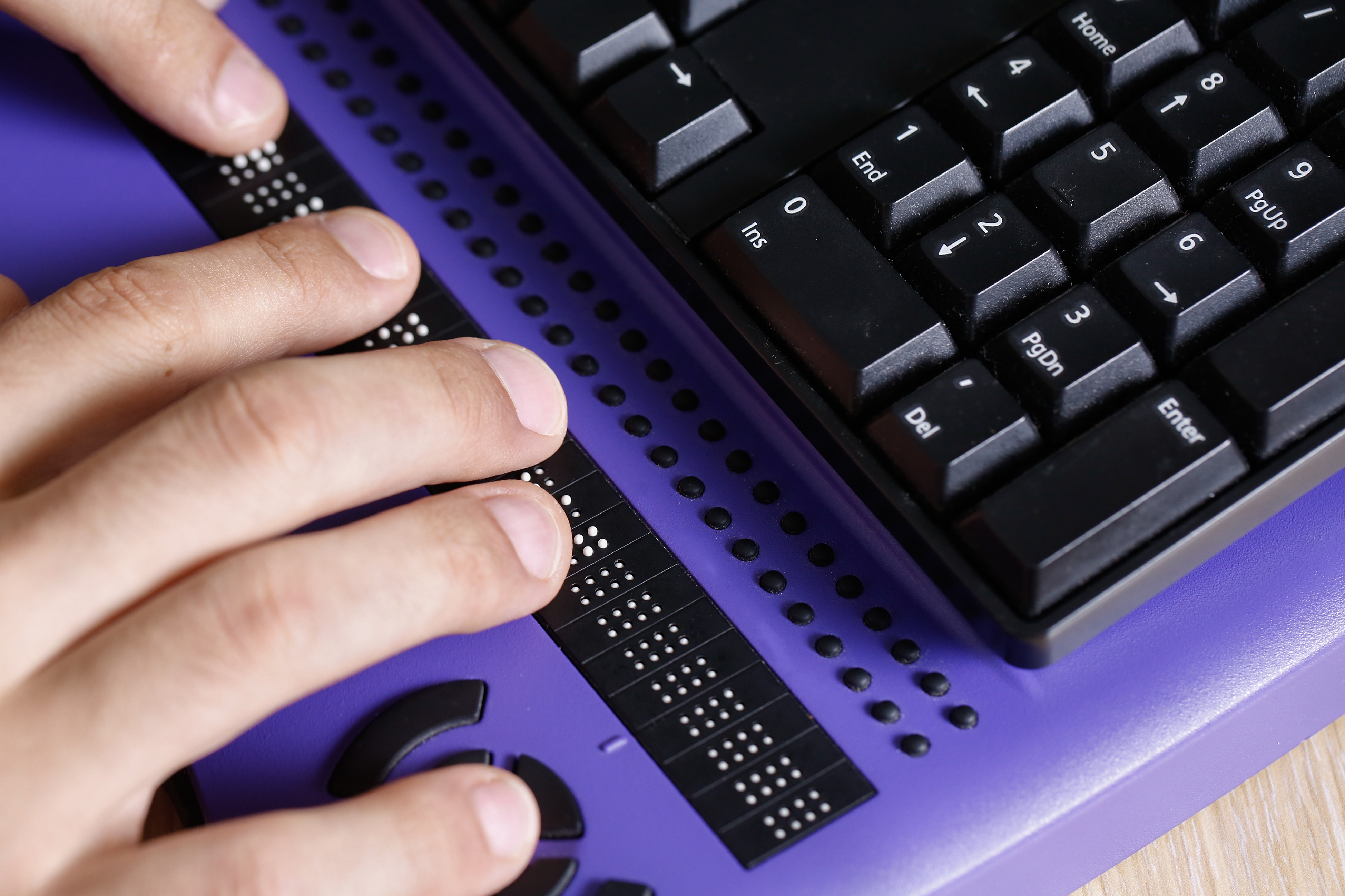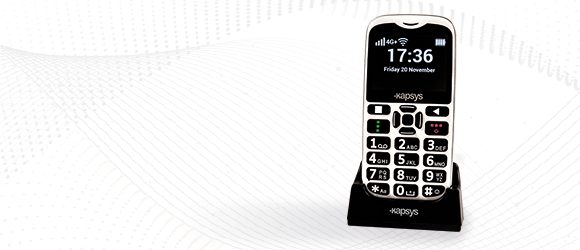Discover Innovative Tools Developed for the Visually Impaired
The growth of ingenious tools for the visually impaired stands for a substantial improvement in availability and freedom. Technologies such as wise glasses with AI abilities and mobile applications designed to offer acoustic summaries are reshaping daily experiences for customers. In addition, wearable gadgets that employ haptic feedback enhance ecological awareness, while modern Braille innovations supply brand-new ways to involve with message. As these tools continue to progress, their influence on the lives of those with aesthetic problems raises vital inquiries concerning the future of inclusivity and autonomy in numerous aspects of life. What exists ahead in this technological landscape?
Smart Glasses for Navigation

Smart glasses made for navigation are transforming the method aesthetically impaired individuals communicate with their setting. These innovative tools use a combination of camera technology, man-made knowledge, and acoustic responses to give real-time information regarding surroundings. By using challenge discovery systems, clever glasses can inform users to prospective dangers, allowing much safer movement in both acquainted and strange settings.
The assimilation of GPS innovation even more boosts navigation capabilities, permitting users to receive acoustic instructions as they relocate. This hands-free approach not just promotes self-reliance but also empowers aesthetically impaired individuals to navigate urban landscapes with raised self-confidence. Additionally, several wise glasses are outfitted with attributes that recognize sites and street signs, supplying contextual info that improves the user experience.
Furthermore, the development of these tools is consistently progressing, with companies functioning to enhance the accuracy of things recognition and increase the series of navigational attributes. As clever glasses become much more affordable and easily accessible, they hold the possible to considerably transform day-to-day live for aesthetically damaged customers. Inevitably, these innovative devices represent an essential action toward inclusivity, offering enhanced flexibility and a higher feeling of freedom for individuals browsing the globe around them.

Mobile Application for Daily Living
Just how can mobile applications boost the every day lives of aesthetically damaged people? Mobile applications are changing the means visually damaged individuals navigate their environments, handle day-to-day jobs, and accessibility information. These applications provide vital support via numerous performances, cultivating independence and enhancing top quality of life.
A number of innovative mobile apps are developed especially for day-to-day living. As an example, apps like Be My Eyes link aesthetically impaired customers with sighted volunteers using video clip telephone calls, enabling them to get real-time help with jobs such as reading labels or navigating strange areas. Seeing AI, created by Microsoft, makes use of synthetic intelligence to explain environments, checked out text, and recognize things, efficiently changing a smartphone into a powerful tool for daily help.
Additionally, navigation applications tailored for the visually damaged, such as Aira and BlindSquare, offer audio-based directions and ecological details, making it possible for individuals to traverse their surroundings securely and confidently. Past navigation and instant support, mobile applications likewise sustain organization and task management, with functions that aid individuals establish pointers, produce order of business, and track appointments. In recap, mobile applications work as crucial sources, encouraging visually damaged people to lead more independent and fulfilling lives.
Wearable Technologies for Help
Empowerment through innovation is significantly apparent in the world of wearable devices created to help aesthetically damaged people. These innovative tools integrate perfectly into day-to-day live, enhancing navigation and giving essential responses to individuals. As an example, wise glasses outfitted with electronic cameras can acknowledge faces and read text out loud, enabling users to connect even more with confidence in expert and social settings.
Another notable development is using haptic comments systems in wearable devices. These systems use resonances or other tactile signals to share info concerning the customer's atmosphere, such as barriers or adjustments in surface, improving mobility and safety. Wearable modern technologies additionally include wristbands that link to smart devices, signaling customers to alerts through refined resonances, thus improving connection without dependence on aesthetic signs.
As these innovations remain to progress, they are not only improving self-reliance for visually damaged individuals but additionally promoting a greater feeling of addition in society. By bridging the gap between obstacles dealt with in everyday living and the possibility for freedom, wearable technologies act as crucial devices in the pursuit for equality and empowerment for those with aesthetic problems.
Audio Description Tools
Sound summary devices play a critical function in enhancing access for visually damaged individuals, supplying them with the capacity to involve with aesthetic media. Screen readers for the blind. These devices offer narrated descriptions of key aesthetic aspects in films, tv shows, and live efficiencies, making certain that customers can fully understand the context and feelings communicated with visuals
Sound description can be incorporated right into various platforms, including streaming solutions, cinema screenings, and live theater. Numerous preferred streaming solutions currently consist of audio summary as an availability attribute, allowing audiences to select it quickly. Along with traditional media, specialized applications additionally exist, giving audio summaries for art exhibits, museums, and various other social occasions.
The efficiency of audio summary hinges on the skill of the narrators, that need to convey aesthetic details succinctly without detracting from the initial audio. Technologies in this field are additionally leading the way for even more individualized experiences, where customers can readjust the level of information and pacing according to their choices.
Braille Innovations and Devices
Braille advancements and gadgets have considerably transformed the method aesthetically impaired people interact with message and details. Modern improvements have actually resulted in the advancement of versatile tools that boost proficiency and independence amongst customers. Notably, Braille show modern technologies have actually advanced, permitting dynamic reading experiences. These gadgets transform digital text into Braille, enabling individuals to access a huge selection of details on smart devices, computer systems, and tablets.
Additionally, portable Braille notetakers integrate conventional Braille input with modern performances, facilitating note-taking, organizing, and paper editing on the go. Voice-activated assistive devices. These compact gadgets frequently include text-to-speech abilities, bridging the void between Braille and auditory details
Additionally, innovative Braille printers have actually arised, permitting users to create Braille tags, files, Resources and instructional materials efficiently. This ease you can check here of access fosters better engagement in educational and professional settings, inevitably advertising inclusivity.
Moreover, research study into smart Braille innovations remains to expand. Instruments that incorporate fabricated intelligence are being explored to supply real-time navigating support and contextual information, boosting the user experience in varied settings. Overall, these advancements reflect a dedication to encouraging aesthetically damaged people through technology, guaranteeing they can easily gain access to and engage with the world around them.

Verdict
The improvement of ingenious tools for the aesthetically impaired substantially improves self-reliance and lifestyle. Smart glasses, mobile applications, wearable innovations, audio description tools, and Braille technologies collectively equip individuals by providing crucial navigation assistance, ecological awareness, and improved reading experiences. These technologies not just foster higher addition however also promote autonomy in everyday tasks, eventually adding to an extra equitable and easily accessible society for Recommended Reading aesthetically impaired people. Continued advancement in this field holds assurance for additional improvements.
As wise glasses end up being more easily accessible and inexpensive, they hold the prospective to dramatically change everyday life for visually impaired users. Mobile applications are revolutionizing the way aesthetically impaired customers browse their settings, handle everyday jobs, and access information. Applications like Be My Eyes connect visually impaired individuals with sighted volunteers through video calls, enabling them to receive real-time support with tasks such as checking out tags or navigating unfamiliar rooms.Additionally, navigating applications customized for the aesthetically damaged, such as Aira and BlindSquare, offer audio-based directions and environmental information, allowing individuals to traverse their surroundings securely and with confidence.The innovation of cutting-edge devices for the aesthetically damaged considerably improves self-reliance and high quality of life.